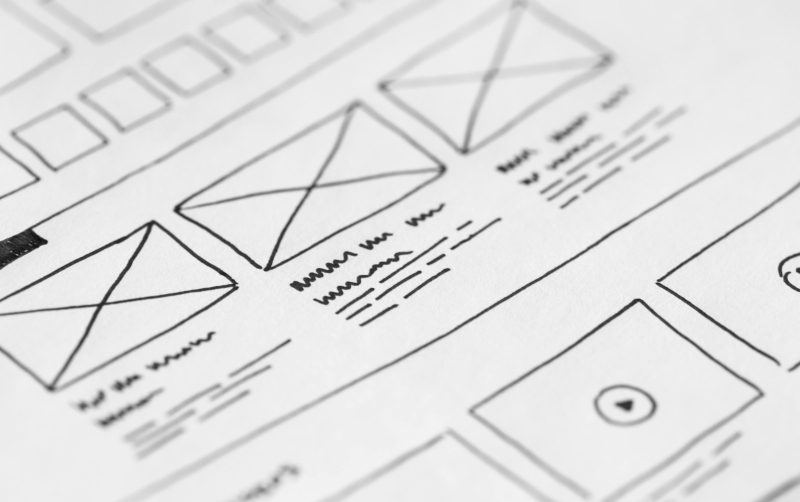5 Tips to Improve User Interaction (UI/UX)

1. Streamline Navigation for Effortless Exploration
Intuitive and unambiguous navigation serves as the linchpin of an exemplary UI/UX. When users struggle to locate essential elements, frustration mounts, leading to premature exits.
Strategies to Enhance Navigation:
- Construct a lucid menu architecture with well-defined categorizations.
- Limit primary navigation items to prevent cognitive overload.
- Incorporate a dynamic search bar with predictive input suggestions to expedite content discovery.
- Deploy breadcrumb trails to provide users with contextual orientation.
Example: eCommerce behemoths like Amazon employ expansive mega menus and advanced filtering options to facilitate swift and effortless product discovery.
2. Adopt a Mobile-First Design Paradigm
With mobile devices spearheading digital interactions, prioritizing a mobile-responsive interface is non-negotiable.
Mobile-First Optimization Techniques:
- Implement adaptive and fluid-responsive layouts to ensure cross-device compatibility.
- Enhance touch interactions by designing tap-friendly buttons and navigational elements.
- Minimize page load times by optimizing multimedia assets and reducing script-heavy dependencies.
- Utilize sticky navigation to keep pivotal actions within easy reach on compact screens.
Example: Google emphasizes mobile-friendly design as a ranking factor, reinforcing the necessity of a seamless mobile-first approach for both UX and SEO.
3. Architect a Compelling Visual Hierarchy
Visual hierarchy dictates the way users process information, guiding their focus toward key touchpoints.
Tactics to Establish Visual Emphasis:
- Deploy contrasting color schemes to accentuate call-to-action (CTA) buttons and essential content.
- Differentiate headline prominence through varied font weights, sizes, and styling.
- Structure elements logically using grid systems and whitespace to mitigate visual congestion.
- Maintain a consistent typography hierarchy for readability and aesthetic coherence.
Example: Platforms such as Spotify strategically employ bold headlines and striking CTAs to direct user behavior, driving engagement and conversions.
4. Optimize Performance for Accelerated Load Times
No matter how visually compelling a design may be, sluggish performance alienates users and escalates bounce rates.
Speed Optimization Methods:
- Compress images and videos without compromising quality to reduce load lag.
- Leverage Content Delivery Networks (CDNs) to expedite content dissemination.
- Consolidate scripts and stylesheets to curtail excessive HTTP requests.
- Implement lazy loading to defer non-essential media until required.
Example: Google’s PageSpeed Insights offers actionable recommendations to enhance page responsiveness and overall performance.
5. Infuse Microinteractions for a Dynamic User Experience
Subtle yet powerful, microinteractions serve as silent communicators that enrich the user journey, adding layers of feedback and interactivity.
Strategic Deployment of Microinteractions:
- Introduce hover effects to buttons and links to reinforce interactivity.
- Animate completion states (e.g., form submissions, likes) to validate user actions.
- Provide immediate response indicators such as spinners or success messages to assure progress.
- Guide users through multi-step processes with tooltips and progress indicators.
Example: Instagram’s “double-tap to like” animation is a quintessential microinteraction that fosters engagement through intuitive design.
Conclusion
Mastering user interaction necessitates a fusion of clarity, responsiveness, and aesthetic appeal. By simplifying navigation, embracing a mobile-first philosophy, structuring a compelling visual hierarchy, optimizing load speed, and embedding interactive microelements, you cultivate a digital environment that captivates, retains, and converts users effectively.
FAQs
- What is the most important aspect of UI/UX design?
Intuitive navigation and a seamless user journey are key to ensuring a great experience.
- How does mobile-first design improve user interaction?
It ensures that users on mobile devices, which account for the majority of traffic, have an optimized and intuitive experience.
- What tools can help improve UI/UX?
Tools like Figma, Adobe XD, Hotjar, and Google Analytics provide insights and design capabilities to enhance UI/UX.
- Why are microinteractions important?
They provide feedback, guide users, and make the experience more engaging, leading to better retention.
- How does loading speed affect user interaction?
Faster load times improve user satisfaction, reduce bounce rates, and boost conversions.






